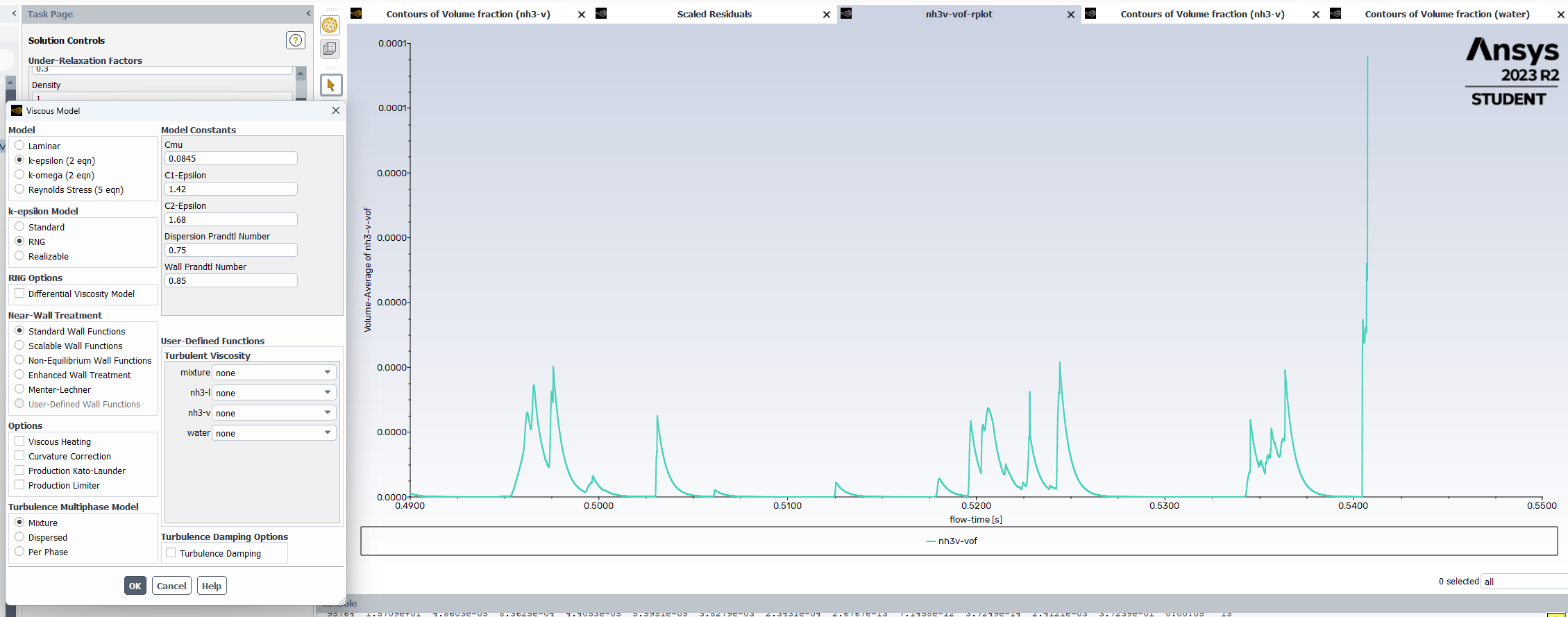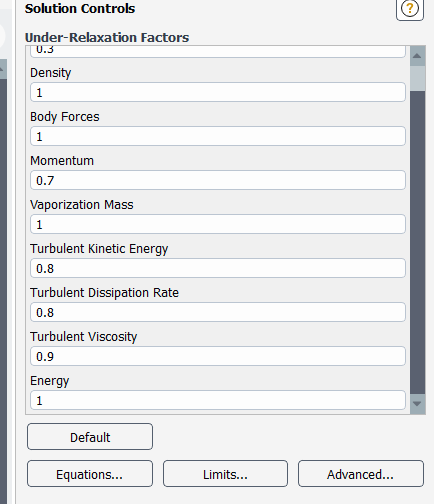Ansys Learning Forum › Forums › Discuss Simulation › Fluids › VOF evaporation problem › Reply To: VOF evaporation problem
Sorry for getting back so late (been busy with my other projects). Thankfully, I resolved and finished the laminar case above (halving the domain also helped speed up the calculation) with rather reasonable time step size and smaller cell size along the ammonia’s expected path.
Now that I’ve changed the turbulence setting because the gushing fluid itself is turbulent and later on I will introduce current in the water column. However, it turns out to be much harder to avoid divergence, especially after the vaporization occurs till some time. The turbulence viscosity seems to be the source of the instability, perhaps due to the starkly different time scale between occurring phenomena – ammonia vaporization and vapor ammonia dissolution to water are much faster than let’s say dissolution of liquid ammonia to water. Or maybe compounded by the very different values of viscosity of the three phases as well.
Tried to decrease under-relaxation factor of turbulent viscosity (and later momentum and turbulent kinetic energy and dissipation rate) to lower value, down to 0.3, yet it just prolong the simulation somewhat and it still crashed well before the simulation run supposedly completed.
The multiphase, viscous settings, as well as the monitored vapor VOF values and residuals are seen below.
Note I decreased the URF values to lower than shown below, but still with no avail.






